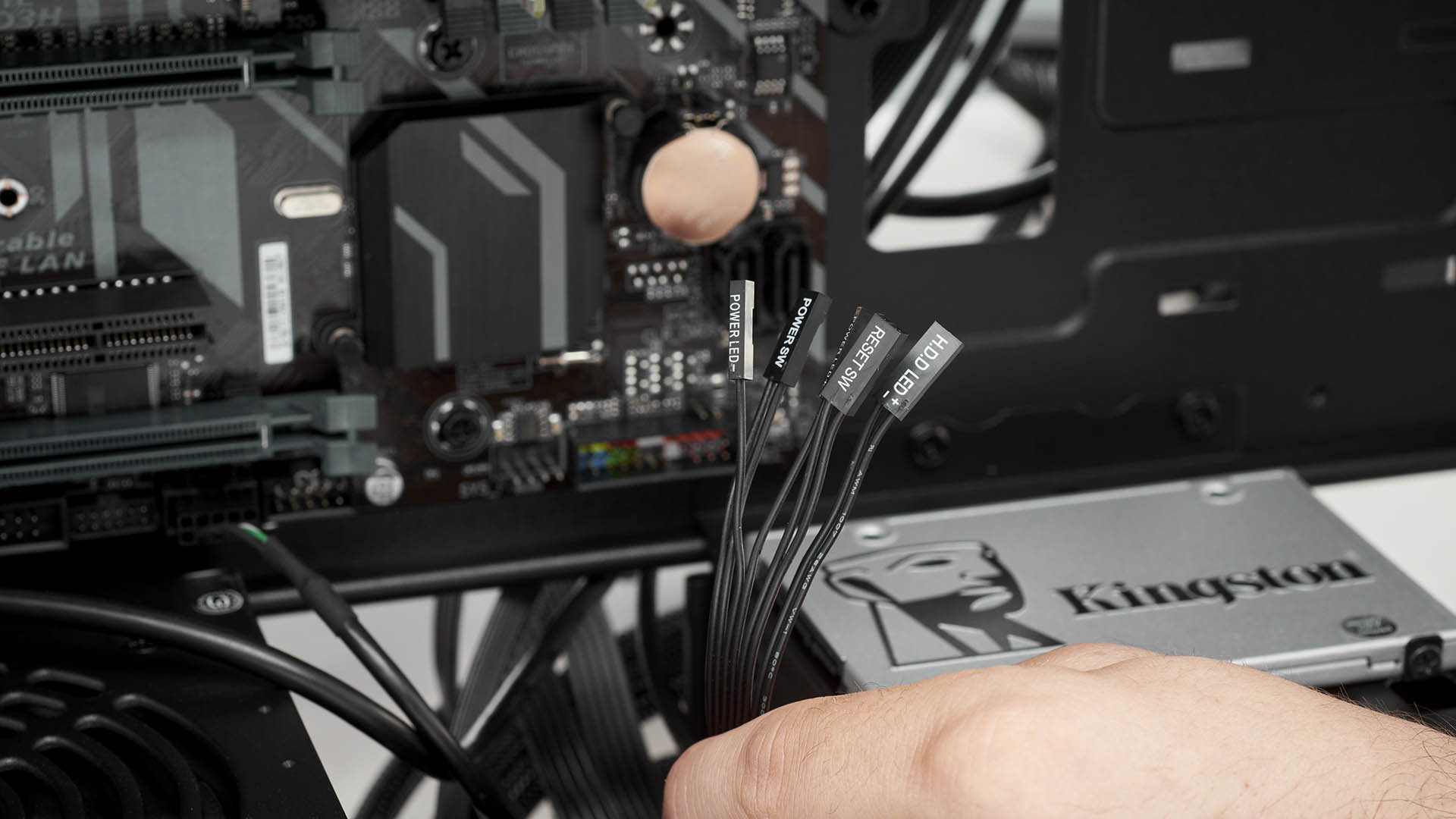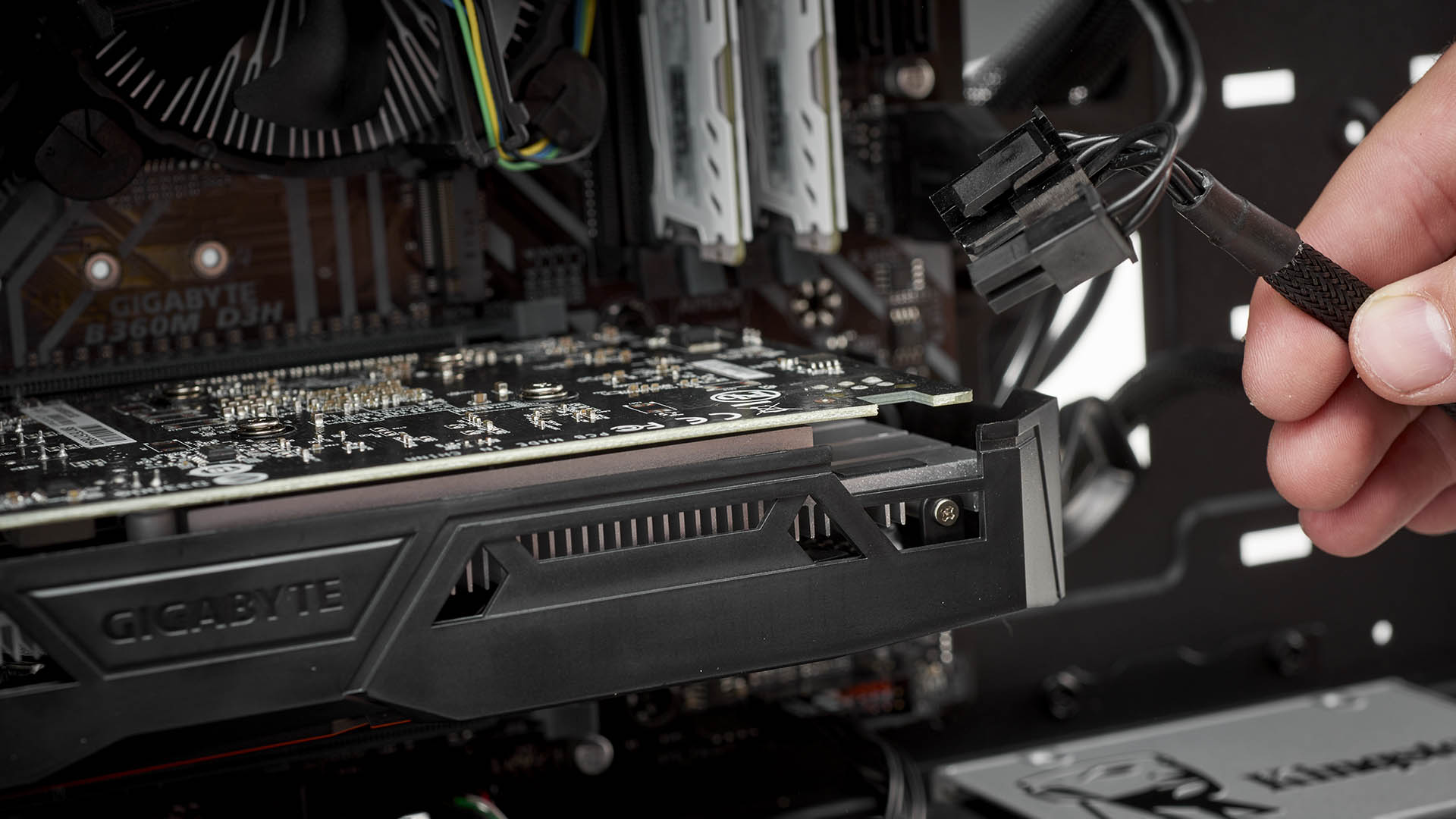PC building has an accessibility problem
'We've all seen a video of Henry Cavill struggling to build a PC and he's got 10 fingers and lots of muscles.'

Humphrey Hanley's motto is 'no hands, no excuses', which perhaps goes some way to explaining his commitment to an 11-hour Twitch stream during which he goes about building a gaming PC from scratch. Hanley is a content creator, motivational speaker, and accessibility specialist with epidermolysis bullosa, and his recent gaming PC project with Intel is a window into PC building's accessibility issues.

Hanley is a content creator who also offers his expertise as an accessibility specialist. If you want to start a conversation today, you can find Hanley over at Twitter (@nohandsnoexcuse) and Twitch (NoHandzNZ).
The goal: build a gaming PC from scratch. It's a task most of us likely have a great deal of experience with already. However, Hanley's build also served another purpose, and that was to help highlight the barriers within the PC building process and what could be improved for someone with a disability—not just for those watching but for Intel's engineers too.
You can read all about the build and the lessons learned by Intel from watching the build process in this post on the Intel newsroom. However, I reached out to Humphrey after reading that story to find out a little more about his thoughts on PC building's accessibility, and the often invisible barriers to entry that can turn some people away from the hobby.
"I must have dropped it like four times, to be honest." Hanley says as he describes the installation of the Intel Core i9 10900K CPU. "Everyone was holding their breath I think at that moment because you know, here I am dropping a part that no one else can even have yet. For days I didn't even know what this thing looks like, I wasn't allowed to open the box before that. And here I am dropping it four times and giving people anxiety issues."
The moment you lower a chip into a motherboard can make your heart skip a beat, whether or not you're someone who is unable to secure a grip on the CPU for the entirety of the installation process. Hanley isn't able to, and that's why that particular moment, involving an incredibly fragile socket and an incredibly expensive CPU, is that much more daunting, he tells me.
"So there were other things as well, Like it's supposed to be that these little screws are tool-less, in theory. So why are they at the manufacturers cranking them so hard into the case that you actually physically, even if you have all your fingers, can't uncrack these things without a tool?"

Furthermore, Hanley points to the lack of graphics card backplate and sharp motherboard heatsinks as pain points for the build—examples of "unnecessary barriers" that remain in the component installation process.
The biggest gaming news, reviews and hardware deals
Keep up to date with the most important stories and the best deals, as picked by the PC Gamer team.
Perhaps unsurprisingly, front panel connectors come up in conversation—a frustration I'm sure we have all had at one time or another. Hanley shares complaints I've heard far too many times before.
You wouldn't just make it more accessible to people with disabilities, you would just make it more accessible to everybody
Humphrey Hanley
"Why, like they came pre-attached to the case why couldn't they just come with a nice plug on them? Like why do they have to be these things that you have to put in two at a time? Fortunately the motherboard came with a little plug, literally like an adapter plug, that you could set them all in first and then give that to the motherboard."
All of which really just left Hanley wondering: 'Why?'
"To me, these are throwbacks, right," Hanley says. "These are how they've just always been and now it kind of creates this, not just a physical barrier, but like this kind of elite barrier in PC building that people who can build PCs feel like they have this thing that they do that involves incredibly fiddly stuff, but it doesn't actually need to involve incredibly fiddly stuff.
"By not involving incredibly fiddly stuff and spending some time in the design phase to remove barriers, you wouldn't just make it more accessible to people with disabilities, you would just make it more accessible to everybody. And in the end, you'd have more people that felt cool about building a PC. I mean, we've all seen a video of Henry Cavill struggling to build a PC and he's got 10 fingers and lots of muscles."

So what are the next steps? So many of these unnecessary barriers seem native to the PC building experience, endemic even, but if that's not only due to a lack of development otherwise. So I ask Hanley: 'Is it time for an upgrade?'
"Absolutely. I think there needs to be some time spent on thinking about why these things are the way they are. And maybe there are some cases where the answer is because it needs to be like it, it needs to be this size, it needs to have this thing for heat, it needs to have that for this. Or whatever. And that makes total sense. But I think there are just so many things looking at this that are like, unnecessarily fiddly, just for the sake of keeping it a little bit secret and elite. And full of barriers."
And that's only achieved through companies understanding this point of view to begin with, Hanley tells me. To do that, just like with game development, it starts by starting a conversation. In this case, the conversation was between Hanley and Intel, whose technical marketing engineer, Kahlief Adams, has already taken much of this onboard. But the door is open to much, much more.
"It's the same sort of thing that we say the game dev companies that are trying to build accessible games that are like, 'But when should we do this and how should we do this?' The answer is from the very beginning. And the answer is by starting a conversation . You know, hire someone like myself that comes in and talks accessibility to the team, and looks at what you're trying to do, and assesses what the barriers might be that you've never even thought of. And then I'm sure the brains are already in the room to figure out how to overcome them once you can identify them."
There have been great strides in accessibility in gaming as of late—the Xbox Adaptive Controller and The Last of Us 2 stand out as shining examples—but the only way we're going to truly open the doors to PC building to everyone is if a frank and honest conversation is to happen between those that experience the worst of its barriers and those with the mind and means to change them, as Hanley explains.
"There are some really cool things that have been happening in the world of accessibility... Like, even as you recognise the Xbox controller being on a Microsoft shelf, you go to a Microsoft Store and that's just there next to the Elite controllers, or whatever. It's just anything that brings that to the conversation that just normalises accessibility function into anything, whether it's games, hardware, tech, magazines—even the articles that you write making sure they're on a platform that's accessible to people, and there are people involved in writing these articles sometimes that actually have an accessibility background."
There's always going to be some complexity to PC building, and by its very nature that begets a degree of dealing with small, intricate parts too. Yet when it's in the realms of possibility to replace old parts and ageing standards that no longer serve a purpose or new installation tools, in order to better serve those otherwise barred from entry into the hobby, is that not reason enough for immediate and actionable change in order to do so?
And for those of you that will say, 'Just buy a pre-built!' I can at least attest to my own reasoning for building a PC, and that's for the enjoyment of the building process in itself—not to mention total agency over parts, construction, and price. When an innovative solution could be only a conversation away—one that may not impact you in the slightest but could be a gateway into a hobby we love and take pride in for someone else—I say: 'Why the hell not?'

Jacob earned his first byline writing for his own tech blog. From there, he graduated to professionally breaking things as hardware writer at PCGamesN, and would go on to run the team as hardware editor. He joined PC Gamer's top staff as senior hardware editor before becoming managing editor of the hardware team, and you'll now find him reporting on the latest developments in the technology and gaming industries and testing the newest PC components.

